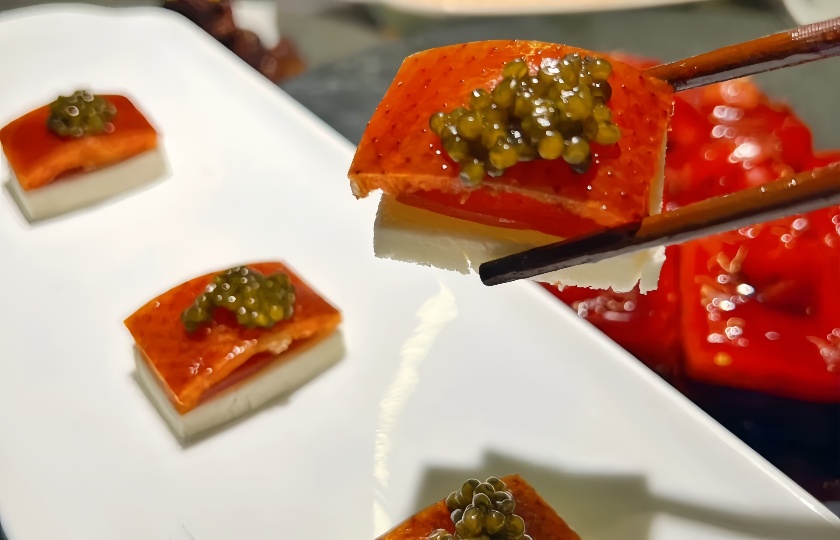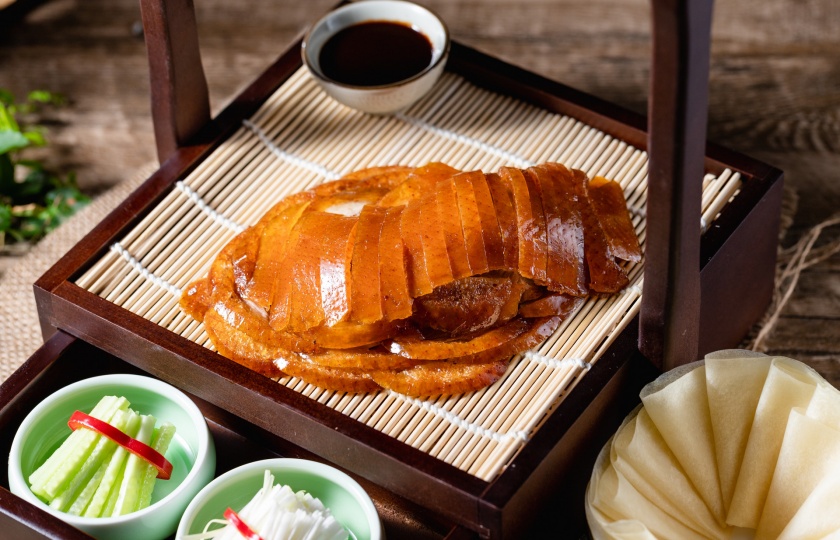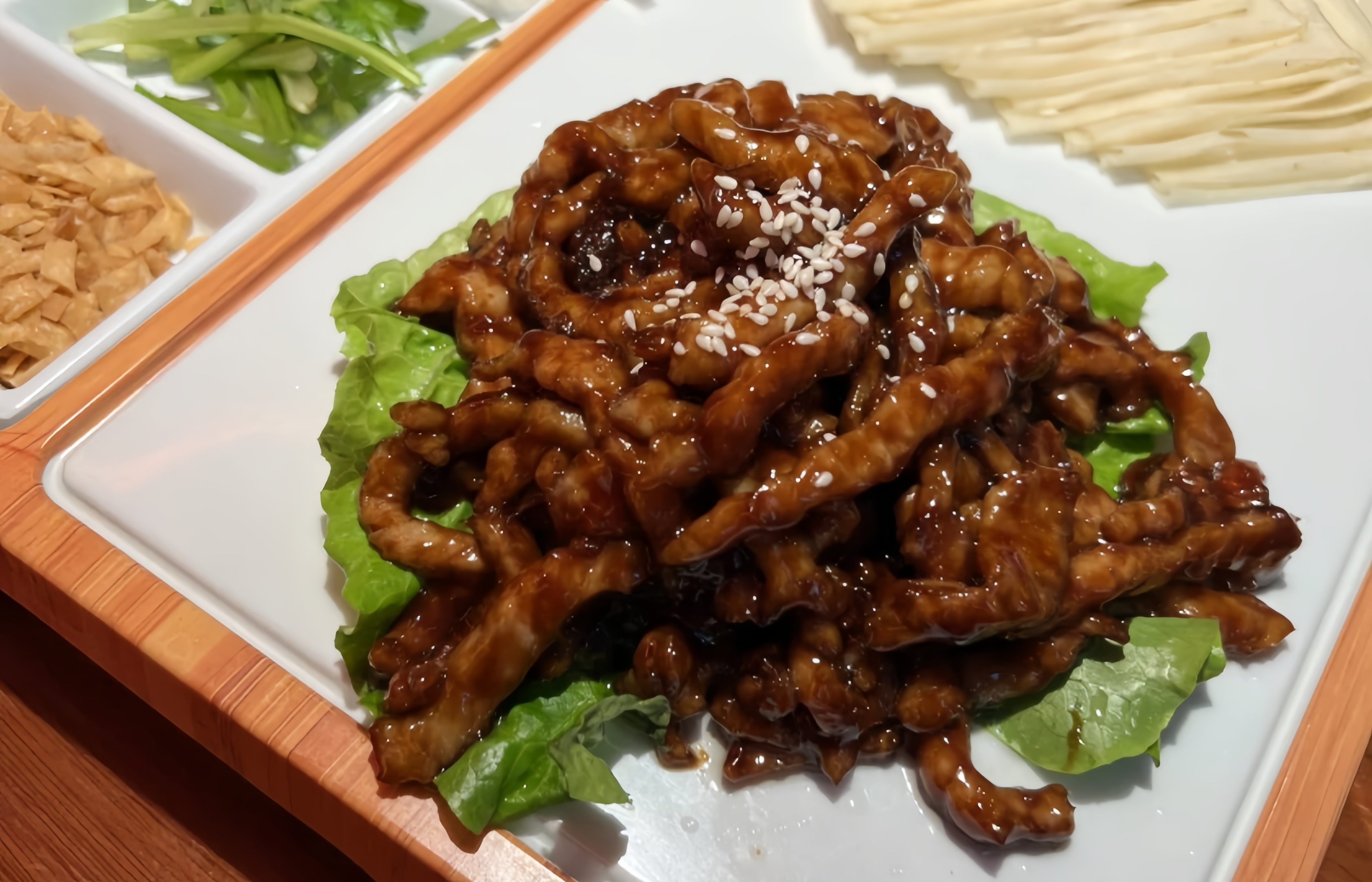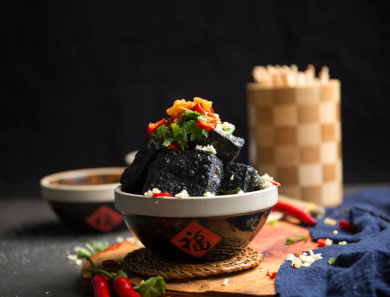Gastronomic Comparison: What Is Cantonese vs Peking Style?

Cantonese cuisine and Beijing cuisine are two important branches in traditional Chinese cuisines. They have significant differences in many aspects. Let's take a look together next.
Different emphases on ingredient selection
Cantonese Style:
As Guangdong is located along the coast, seafood accounts for a relatively large proportion in Cantonese cuisine ingredients. Such as various delicious fish, shrimp, crabs, shellfish, etc.
Representative dishes such as white cut chicken, roast goose, claypot rice, etc.
Peking Style:
Affected by the northern geographical environment, meat ingredients in Beijing cuisine are mostly pork and mutton.
Representative dishes such as Beijing roast duck, instant-boiled mutton, etc.
Different tastes
Cantonese Style:
It is known for being light, delicious, and original. In the cooking process, it focuses on highlighting the taste of the ingredients themselves.
The taste is relatively mild. Although there are also various tastes such as sweet and sour, salty and fresh, it is not too intense.
Peking Style:
The taste is rich and mellow. It is good at using rich sauces for seasoning, such as sweet flour paste, yellow bean paste, etc., giving the dishes a strong northern flavor.
There are differences in cooking methods
Cantonese Style:
There are diverse cooking methods, especially good at steaming, boiling, stewing, stir-frying, frying, etc. Steaming can well preserve the nutrition and freshness of ingredients. Making soup is also a major feature of Cantonese cuisine. Through long-time stewing, the essence of ingredients is integrated into the soup.
Peking Style:
Common cooking methods include roasting, instant-boiling, quick-frying, sliding-frying, etc. Beijing roast duck is roasted in a hanging oven or a closed oven to make the duck skin crispy; instant-boiled mutton is to boil thin mutton slices in a copper pot and eat with dipping sauce, highlighting the tenderness of the ingredients.
Different dietary culture backgrounds
Cantonese Style:
Guangdong is an important port for China's foreign trade, and its dietary culture has absorbed foreign elements. For example, Cantonese morning tea has various exquisite dim sum, and its style is influenced to a certain extent by Western dietary culture.
Cantonese cuisine focuses on enjoying the process of delicious food and pays attention to delicacy and refinement. It is an embodiment of the lifestyle and culture in Guangdong region.
Peking Style:
As the ancient capital of China, Beijing's dietary culture combines the characteristics of palace cuisine, official cuisine and folk cuisine. There are many dishes in Beijing cuisine that were once palace delicacies or official dishes, with a noble and elegant style.
It also reflects the boldness and magnanimity of the north. For example, the Manchu-Han banquet is the representative of high-end feasts in Beijing cuisine's dietary culture. The dishes are rich and the scale is grand.

Why is Peking duck so special?
Historical and Cultural Significance:
Peking Duck is a culinary treasure with deep historical roots. Originating during the Northern and Southern Dynasties, it evolved over centuries, becoming a royal delicacy in the Ming and Qing Dynasties. It has witnessed dynastic changes and absorbed culinary wisdom from various eras, giving it profound cultural value. This rich heritage makes Peking Duck uniquely charming, with each slice of duck carrying a piece of history.
Ingredient Selection:
The choice of ingredients for Peking Duck is meticulous, with the key being the Beijing-raised duck, known as Beijing Fill Duck. These ducks are bred under carefully controlled conditions, with strict regulation of feed types and amounts, ensuring the ducks develop a balanced fat-to-meat ratio and tender meat during their optimal growth period. This high-quality duck is foundational to the taste and texture of Peking Duck.
Preparation Techniques:
The preparation of Peking Duck is an art form, involving a complex and precise process. After slaughtering, air is pumped between the skin and meat to create a gap, facilitating the roasting process. Steps like scalding the skin, applying a sugar coating, and air-drying are crucial for the final quality of the duck. The roasting phase is the most critical, traditionally done with fruitwood, such as jujube or pear wood, whose smoke infuses the duck with a unique aroma. Master chefs meticulously control the heat and timing, resulting in a duck with golden, crispy skin and tender, juicy meat—qualities unmatched by other roasted ducks.
Flavor Experience:
Peking Duck offers a feast for the senses. The crispy skin produces a delightful "crunch" with each bite, releasing a blend of rendered fat and fruitwood aroma. The meat remains tender and juicy, perfectly complementing the crispy skin. When wrapped in a thin pancake with scallions, cucumber, and sweet bean sauce, the combination of sweet, savory, fresh, and crunchy elements creates a harmonious and exquisite taste experience.
Ritualistic Dining Experience:
Eating Peking Duck is an event filled with ritual. The chef carves the duck tableside with skillful precision, slicing the meat thinly. Diners then wrap the duck and accompaniments in pancakes, each step filled with anticipation. This ritual enhances the dining experience, making Peking Duck not just a meal but a cultural symbol of culinary excellence.
What does Cantonese style taste like?
Cantonese cuisine is renowned for its light yet flavorful approach, which emphasizes the natural taste of ingredients rather than relying on heavy seasonings. This subtlety is not blandness but a sophisticated method to highlight the inherent flavors of the food.
Cantonese Soups:
Cantonese soups,such as coconut chicken soup,are a prime example.Made by simmering fresh coconut water with chicken,the soup is delicately sweet with a rich coconut aroma and the savory essence of chicken.This represents the Cantonese culinary philosophy of allowing the natural flavors of ingredients to meld harmoniously,creating a refreshing and nourishing broth that captures the essence of each component.
Roast Meats:
Cantonese roast meats are legendary.Take roast goose,for instance.The skin is roasted to a golden,crispy perfection,with some of the fat rendered beneath,giving the skin a rich,caramelized flavor.The meat remains juicy and tender,seasoned just right with a hint of unique spices.Char siu(barbecued pork)is another standout,featuring tender,juicy pork coated in a sweet glaze.The balance of sweet and savory flavors,along with the meat’s aroma,creates an unforgettable taste experience.
Seafood:
Seafood plays a crucial role in Cantonese cuisine.A common preparation is boiled shrimp(白灼虾),where fresh shrimp are quickly cooked in boiling water to preserve their natural sweetness and tender texture.A simple dip in soy sauce or a special seafood sauce enhances the shrimp’s pure,delightful taste,showcasing the natural flavors without overwhelming them.
Dim Sum:
Cantonese dim sum is also distinctive,with shrimp dumplingsbeing a prime example.These dumplings have a thin,translucent wrapper filled with plump shrimp,pork,and bamboo shoots.The shrimp’s sweetness takes center stage,with each bite offering a burst of juicy,tender shrimp complemented by the crunch of bamboo shoots and the richness of pork.This combination creates a rich and varied texture and flavor profile.
Stir-Fried Rice Noodles:
Cantonese stir-fried rice noodles are noteworthy.The noodles are smooth and elastic,stir-fried over high heat with bean sprouts,chives,and marinated beef.The beef is tender and juicy,while the bean sprouts and chives add a refreshing crunch.The noodles absorb the flavors of the ingredients and seasonings,resulting in a savory dish with a perfect"wok hei"(breath of the wok).
Cantonese cuisine is characterized by its light and fresh flavors,focusing on the original taste of ingredients.At the same time,it offers rich and hearty flavors in dishes like roast meats and dim sum,providing a diverse and unforgettable culinary experience.

What does Cantonese sauce taste like?
1. Seafood Sauce
Features: Made from seafood like shrimp, crab, and fish, this sauce offers a rich, savory flavor with a perfect balance of salty and sweet. It enhances the natural taste of seafood dishes.
Ideal for: Seafood lovers and those who frequently cook seafood dishes. It's perfect for anyone seeking a unique flavor boost.
2. Chu Hou Sauce
Features: This sauce has a rich, fermented soy flavor with a hint of sweetness and a vibrant red color. It's made from soybeans and flour, adding tenderness and a distinct aroma to meats.
Ideal for: Meat enthusiasts, especially when cooking beef or pork. It's a must-have for fans of traditional Cantonese cuisine.
3. Satay Sauce
Features: Made from peanuts, sesame, garlic, and chili, this sauce has a unique aroma with nutty, mildly spicy, and seafood notes. It's versatile, great for noodles, hot pots, and stir-fries.
Ideal for: Those who love exploring new flavors, especially fans of hot pots and noodle dishes.
4. XO Sauce
Features: Crafted from premium ingredients like dried scallops, ham, and shrimp, this sauce is incredibly flavorful with a rich umami and seafood taste. It's luxurious and complex.
Ideal for: People who appreciate high-quality culinary experiences, perfect for special occasions or gourmet dishes.
These Cantonese sauces each bring their own unique flair to dishes, adding depth and complexity to your culinary creations.
What is the staple food of Cantonese cuisine?
Claypot Rice
Claypot Rice is one of the most iconic staples in Cantonese cuisine. Its charm lies in the small clay pot that holds an abundance of flavors. The rice absorbs the rich aroma of the meats, creating a unique taste. At the bottom, there's a crispy, golden crust that adds a delightful crunch to each bite. Whether it's the rich and savory preserved meat claypot rice or the tender and juicy chicken claypot rice, each variation brings immense satisfaction.
Wonton Noodles
Wonton Noodles hold a significant place among Cantonese staples and are not to be missed. This dish consists of delicious wontons, smooth noodles, and a steaming broth. The wontons are filled with various ingredients such as pork and shrimp, each offering a distinct texture—pork being tender and shrimp bouncy. The rich broth enhances the entire dish, making it an excellent choice for starting your day or as a comforting midday meal.
Stir-Fried Rice Noodles
Stir-Fried Rice Noodles are a common and beloved street food in Guangzhou. The key to this dish is the chewy and smooth rice noodles. During the stir-frying process, they are combined with various meats, vegetables, and sauces. The high heat brings out a fusion of flavors, making each noodle coated with sauce and the aroma of other ingredients, which is utterly irresistible.
Sticky Rice in Lotus Leaf
Sticky Rice in Lotus Leaf is a classic Cantonese staple. It involves sticky rice and various fillings wrapped in lotus leaves and steamed. The fragrance of the lotus leaf permeates the rice and fillings, making the rice soft and sweet. The rich texture of the fillings complements the sticky rice perfectly, providing a mouthful of happiness with each bite. It's also nutritious, making it ideal for family gatherings or social events, adding a warm and cozy atmosphere.
Cheung Fun
Cheung Fun is a signature staple in Guangzhou tea houses. This dish features thin rice noodle rolls filled with various ingredients. The rice noodle skin is smooth and delicate, melting in your mouth. The diverse fillings add to the texture, and when drizzled with a special sauce, the flavor is elevated, creating a multi-layered taste that lingers. Each bite offers a delightful blend of the rice noodle, filling, and sauce.
Cantonese staples are diverse and uniquely flavorful. They are not only delicious but also carry rich cultural significance. I highly recommend trying these dishes to experience the unique culinary delights of Cantonese cuisine firsthand.























